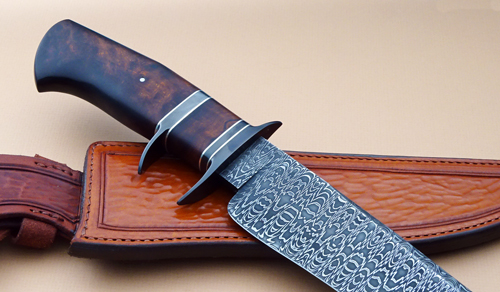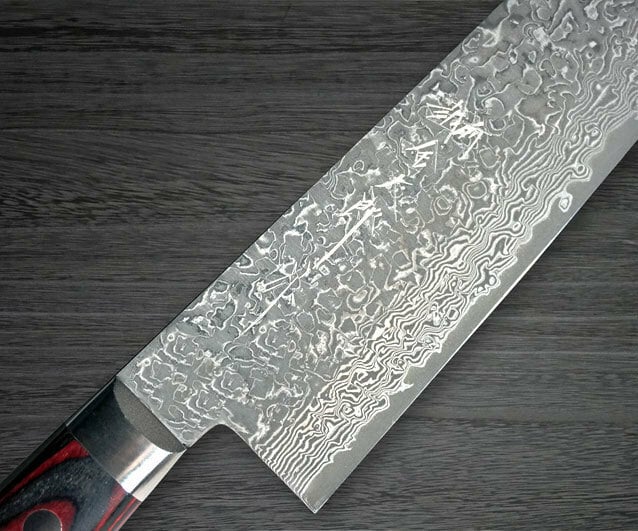B Merry Studio Fundamentals Explained
Wiki Article
Some Ideas on B Merry Studio You Need To Know
Table of ContentsGetting The B Merry Studio To WorkSee This Report on B Merry StudioB Merry Studio - The FactsThe Basic Principles Of B Merry Studio Indicators on B Merry Studio You Need To Know
Blade products are products utilized to make the blade of a knife or various other simple bordered hand tool or weapon, such as a hatchet or sword. Blades can be made from a selection of products - custom leather sheaths for knives. The most usual being carbon steel, stainless steel, tool steel as well as alloy steel. Other less usual materials in blades include: cobalt and titanium alloys, ceramics, obsidian, as well as plastic. The Rockwell range is a solidity range based on the resistance to indentation a product has. (scratch resistance screening), which is utilized in mineralogy. (frequently called less "hard").
V-toku1/ V-toku2, alloyed steel with W/Cr's original attributes. Device steel grades made use of in cutlery: A, D, O, M, T, S, L, W.
The Single Strategy To Use For B Merry Studio
The complying with are device steels, which are alloy steels typically used to produce hardened cutting devices: A2, a steel that trades wear resistance for sturdiness. It is used in personalized made battling blades by makers such as Phill Hartsfield, Rob Criswell, Mike Snody as well as John Fitzen (Razor Side United States) as well as among the newest to standardize his camp/survival blades in A2 device steel is Aaron Gough from Gough custom, Canada.A2 is made use of as the typical tool steel for the Black Wolf Knives variety of Hunting Blades by Marc Godwin, Japan A3 A4 A5 A6, this grade of tool steel air-hardens at a reasonably low temperature (approximately the very same temperature as oil-hardening qualities) and is dimensionally stable. It is typically utilized for dies, creating devices, as well as gauges that do not call for extreme wear resistance but do require high stability.

B Merry Studio for Beginners
55% Manganese 0. 30% Silicon 0. 30% Chromium 5. 00% Molybdenum 1. 25% Vanadium 1. 25% A8 A9 A10, this read this article grade contains a consistent circulation of graphite fragments to enhance machinability and provide self-lubricating properties. It is commonly made use of for evaluates, arbours, shears, and strikes. D2 is a high carbon, high chromium pass away steel and also is the greatest carbon alloy device and also pass away steel typically used in blade making.
, a preferred creating steel. Great wear resistance as well as exceptional side retention., as well as several other customized knife manufacturers (B Merry Studio).
Everything about B Merry Studio
As high-speed tool steel, it is qualified of keeping a toughened up side at high temperature levels generated in different machining processes. It isn't utilized as extensively in factory production blades, as CPM M4 has ended up being more prominent. Custom blade makers still utilize it for blades meant for fine reducing with very slim sides.SAF 2507 is a Sandvik trademarked steel having 25% chromium, 7% nickel, 4% molybdenum and also various other alloying components such as nitrogen and also manganese. T1 T2 S1, a tool carbon shock-resistant steel device steel which incorporates modest solidity with good influence strength. Carbon content. 40 -. 55%. W1, a water setting device steel.
W2, tool steel that holds its edge rather well but is not very hard. Has a carbon web content of 1. It can be left at high solidity levels (it can attain a relieved hardness of 67 Rc) as well as still be quite difficult especially in larger blades with thicker spines as the core of the thick part of the blade does not achieve full hardness due to the fact that of the shallow hardening nature of the steel.
Getting My B Merry Studio To Work
W2 is just one of the carbon steels that can create a wonderful Hamon in warmth treating. SK3, SK4, SK5 - Japanese carbon steels. SK stands for "Steel Kougu" indicating "Steel Device". The reduced number shows fewer contaminations. produces Crucible Particle Metallurgy (CPM) device steels using a powder metal build process.CPM 3V, an exclusive steel, extremely high toughness, much less than CPM 1V, but even more than A2, and high wear resistance, much better than CPM 1V. Utilized by numerous custom-made blades makers and also factories, including Jerry Hossom, Mike Stewart [Bark River], Reese Weiland, Nathan Carothers, as well as Dan Keffeler. Makes great selection for swords and also big knives.
Report this wiki page